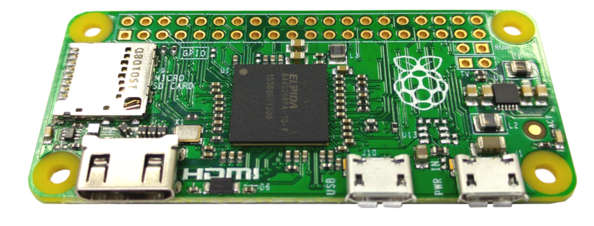| 10 Million Raspberry Pis |
| Written by Harry Fairhead | |||
| Saturday, 10 September 2016 | |||
|
It is all too easy to miss the surprise factor in this statistic. We have grown accustomed to the way the Raspberry Pi has taken over the world, but 10 Million Units in four years is amazing. What are they all doing! The Raspberry Pi isn't an impressive piece of hardware in its own right. It is only when you discover what you are getting for your money do you realize how special it is. Just in case you are one of the few who haven't encountered a Pi it is worth explaining that it is an ARM based Linux single board computer. It has some GPIO lines and it can be expanded using HAT addon boards. This makes it suitable for embedded and IoT projects. However being a full Linux system it also has the ability to act as a desktop system or a server. For the IoT type project it has power to spare and this makes it possible to think about implementing projects that without it would have involved more than one device and probably something expensive. Today's modern line up of Pis spans the range. The Pi 2 is a quad core ARM capable of being a server or doing IoT tasks. The Pi Zero is a simpler and much cheaper single core machine that only costs $5 and the Pi 3 is a quad core 64 bit ARM with built in WiFI and Bluetooth. You could say that there is a Pi for every task at the right price. It can even be difficult to keep your sights low and use a Pi Zero when a Pi Zero will do simply because the overkill of a Pi 3 isn't that much more expensive.
The Pi Zero $5 Linux Machine - the next 10 Million Pis? Yes it is all about cost. So 10 Million Pis sold in four years. I can hear you thinking, "I bet most of them are in drawers and cupboards". This might well be true, but the fact that it is true makes the point - disposable computing is with us. The Pi makes it possible to think of an idea, buy a Pi and fail without too much heartache. The Pi really has changed things and in some unexpected ways. It isn't just that there are 10 million devices out there, it is that there is a community large enough to buy 10 million devices. You are never alone with a Pi! This makes it possible to be safe in the knowledge that it isn't going to disappear overnight. When you pick a single board computer for a project you face a dilemma - who knows how long it will be available for in the future. I don't know what sort of disposable computing we will be using in 40 years time but I'd bet that it was backward compatible with the Pi. It has also had some strange side effects. Ten million Pis means ten million Linux machines. Once I would talk about Linux and no one listened. Now I seem to be very popular if I can point out some obscure command line trick that gets an important job done. There seem to be lots of Linux-educated people out there! In addition I often hear comments that suggest that many are only hanging on to their Windows machines because of inertia or because it's what they use at work. There seems to be no great attraction to change to desktop Linux, but users seem a lot less worried by the idea and if Microsoft makes a big enough mistake the migration might follow. The Pi Foundation has issued a new starter kit to mark the 10 Millionth Pi but to be honest it isn't really the celebration it deserves - a box, a case, a mouse and keyboard and a Pi 3 Model B plus a book Adventures in Raspberry Pi, Foundation Edition.
There are a few things that cast a bit of a shadow over the celebration. Many bemoan and regret the fact that the Pi isn't fully open source hardware. It also hasn't made the impact in the professional IoT world that it should. The Pi Compute module is an attempt to produce a more rugged and upmarket version and this should be getting a second lease of life very soon with the release of a Pi 3 based device. However, there is still a tendency for professional embedded designers to sneer at the Pi and its users and then set about designing simple IoT systems using hardware that is ten times less powerful costing ten times as much and with no community to speak of. I wonder how long before we reach 20 Million? More InformationRelated ArticlesWindows 10 Raspberry Pi Starter Kit Raspberry Pi Gets Its Official Touch Screen Raspberry Pi 2 - Quad Core And Runs Windows BBC micro:bit Your Next Computer? Real Raspberry Pi - Getting Started And Custom NOOBS Exploring Raspberry Pi (Book Review)
To be informed about new articles on I Programmer, sign up for our weekly newsletter, subscribe to the RSS feed and follow us on, Twitter, Facebook, Google+ or Linkedin.
Comments
or email your comment to: comments@i-programmer.info |
|||
| Last Updated ( Saturday, 10 September 2016 ) |




